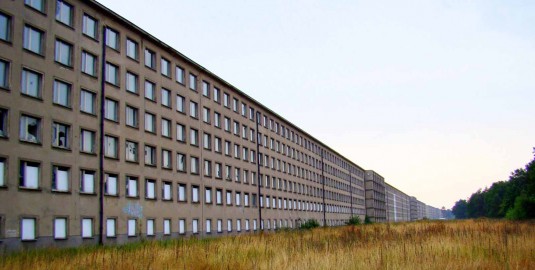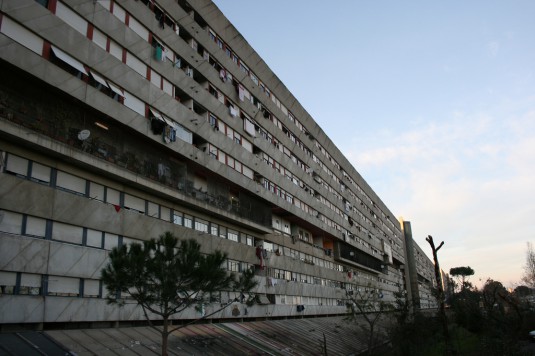by Michael Mehaffy and Nikos A. Salingaros
There’s a quiet, but important, revolution going on in environmental design today. It started in hospitals, of all places.
Medical science has long used an “evidence-based” methodology. It’s a trial-and-error process that goes through an evolutionary cycle: the doctor tries something, evaluates it, then goes on to use what works. In this way medicine has developed after millennia of experimentation with cures, interventions, herbal remedies, etc.; even today, its application is heuristic. Your doctor might give you a small dose of something, and then if you feel better, will give you more. If you feel worse, stop taking it! Doctors study many patients and their reactions to treatments, and use the collective evidence to modify medicines and procedures, and improve them. Based on this accrued knowledge we can successfully treat diseases today that were once thought to be inevitable afflictions.

Researchers are documenting evidence of the consequences of urban design choices on human health, resource depletion and other worrisome factors — a particularly urgent need as these models proliferate around the world. Photo: David Evers
Over the years, the medical profession has taken an increasing interest in the design of hospitals, because it has become evident that the patients’ health had a lot to do with the design of the spaces. Did infectious diseases spread more rapidly when patients shared rooms? (Yes, they did.) Were certain kinds of surfaces better or worse at preventing the spread of germs? (Yes.) Did patients do better when their rooms had the kinds of designs that reduced stress? (Yes, again.) These observations and many others have become the subject of “evidence-based design” — design that uses the evidentiary methods of medicine.
Gradually doctors as well as environmental designers began asking the same kinds of questions about the larger urban environment. After all, it did no good to treat a patient at the hospital if he went right back out and got sick again. So epidemiologists like Dr. Howard Frumkin and Dr. Richard Jackson began to look at evidence of, for example, how urban environments could promote walking and exercise, and how nature influences health and wellbeing.
Others, like Dr. Roger Ulrich, investigated how environments of all kinds affected wellbeing in other ways, including the (habitually dismissed) health implications of aesthetic qualities. They made an extraordinary discovery: the characteristics of nature, as observed in plants, trees, water, as well as pleasant views, had measurably positive effects on patients’ recovery, stress levels, and physiological wellbeing. (We will have more to say about this extraordinary topic of Biophilia in an upcoming post.)

Steve Jobs shows off the MacBook Air, a product of relentless evolutionary iterations. Photo: Matthew Yohe
These discoveries have fed the growth of a new, “evidence-based,” approach to design, which anchors human needs within the built environment. Yet many designers still don’t appreciate it. One key point to understand is that evidence-based design is not a simple formulaic kind of process — here is Fact X, and it allows me to pop out Design Y. It isn’t like that at all, any more than medicine could be that simplistic. Rather, the act of design is more like a process of adaptive computation.
Design computations employ a sequence of steps: trial-and-error observations of how a person interacts with his/her specific environment, each time enhancing that interaction to benefit the specific task to be performed and situating that person optimally in the immediate built environment, like an urban plaza, a building’s entrance, a computer screen, to something as small as a cabinet handle.
Technically speaking, the type of environmental computation we use for design is not at all like computation using a formula, but more like approximation by recursion: keep computing and checking until the desired result emerges. (This kind of recursive process is known as an algorithm, a sequence of mathematical steps that lead towards the solution.) Using a formula could give a result in only one step — but that’s not a solution that is likely to achieve a successfully adaptive design.

Pruitt-Igoe social housing complex, St. Louis, Missouri was built, 1953-1956, by architect Minoru Yamasaki, demolished 1972-1976. Image courtesy Finnbar5000
A design has to start with some initial conditions, and then adapt to the boundary conditions — the conditions it encounters as it evolves. This can only happen through recursion, which is how our design achieves adaptive evolution and a much better “fit” with the problem. We might have a very good intuition of what the design has to embody — Steve Jobs, for instance, was famous for his intuition of the final qualities a design needed — but then large teams of people had to refine that initial vision and bring iterations to him to evaluate. He was setting the initial conditions (what he wanted the devices to be able to do for people), and they were adapting to the boundary conditions.
Design computations increase the adaptation of the system towards human wellbeing, as checked by documented evidence. The goal is not to design something rigidly specific (i.e. as laid down in a blueprint prepared in someone’s office); the project brief and specifications are merely constraints. For this reason, the exact final product is incompletely known at the beginning of the computation; only some of its important qualities are decided beforehand, and attaining them drives the design to completion. If the product is completely known at the beginning, there can be no adaptation. It is likely to fail on human terms.

The Prora building on the island of Rügen, Germany was built, 1936-1939, by Clemens Klotz, one of Adolf Hitler’s architects. Now largely abandoned. Image courtesy of Giorgio Muratore, Archiwatch

A sad example of ideological, not evidence-based, design is the Corviale social housing complex in Rome, built 1975-1982 by architect Mario Fiorentino with others. In the face of massive evidence of its damage to human lives, defenders insisted the project was sound, but “just wasn’t implemented correctly”. Image: G. Parise, courtesy of Ateneo Federato Spazio e Società
This, in a nutshell, is the subject of evidence-based design. We want evidence for all these things — information about whether we are on track, or have strayed, and how to get back. We want evidence of the approaches that are most likely to work. And we want evidence of the design configurations that have been used in the past, that have perhaps resulted from the work of other people collaborating to solve similar problems. In this way, we can build up more useful knowledge about the most likely solutions that will work again — so-called “collective intelligence”.
Unfortunately, our world is full of designs that try to reduce this process to a formula, or a template — and they are, quite simply, bad designs. However much glittery imagery or high art is layered over them, they fail at the essential job they are supposed to do for human beings. From the point of view of the “fitness” to the problems they are supposed to solve, we say they are “maladapted”. Those simplistic designs may try to hide these flaws with eye-catching imagery or camouflage them with striking (yet superficial) ideas — but they are still failures. And often these failures can be catastrophic.
In fact, bad designs often have something in common — they proceed from a grand theory or an ideology about what the design should be. This is extremely dangerous, because the process becomes immune to evidence. If you are working solely from the text of an idea, you can always add a new bit of text to fit whatever happens. Thus, if Pruitt-Igoe (an infamous social housing “project” in St. Louis) failed as a model of Le Corbusier’s “Towers in the Park”, it must have been because it was not faithful enough to the “master’s vision”. Next time it’s guaranteed to work, if only our heart is pure enough!
It is often useful to define an idea by also mentioning its opposite. Here, evidence-based design contrasts sharply to the application of a ready-made template that has not been adaptively computed. Why are such templates adopted by society, and then stubbornly hung onto against all the evidence? Going back to historical medicine, treatments that consistently killed patients sometimes survived a very long time before they were abandoned. Eventually, however, the evidence caught up with them. But this has been slow to happen with architecture.
For example, five days after the government dynamited Pruitt-Igoe because it proved to be a colossal failure, the authorities in Rome decided to build the very similar “Corviale” social housing complex. Why did they not take a cautionary lesson from such a conspicuous disaster? Arguably, the iconic power of the prototype “Colossus of Prora”, built by the Nazis on the island of Rügen, Germany was too seductive. Even now, when schemes for demolishing the Corviale and replacing it with human-scale buildings were presented, Roman architectural academics frantically tried to preserve the Corviale as a classified architectural “monument”. The power of iconic images overwhelmed even the consideration of evidence of what actually worked for human beings.
To get past this domination of superficial, image-based design, our trial-and-error design method requires one crucial feature — a testable hypothesis that can be disproven. This is the essence of the “scientific method”, and it’s fundamentally different from the ex cathedra dogmatism that self-justifies much architectural design. For Steve Jobs, the testable hypothesis was something like “this design will be delightfully easy to use, and it will be beautiful in this and other ways.” He was famous for telling his designers: It’s not just the look and feel. It’s how it works. “In most people’s vocabularies, design means veneer”, he told Fortune Magazine. “But to me, nothing could be further from the meaning of design. Design is the fundamental soul of a man-made creation that ends up expressing itself in successive outer layers of the product or service.” All of those layers must be seamlessly integrated into one elegantly adaptive expression — the result of relentless evolutionary refinements.
A helpful lesson of evidence-based design here — one that most computer folks have not yet come to terms with — is that we are not finished with our computations just because the “product” has been delivered. The environment continues to be transformed, in ways that we could not have possibly foreseen. The boundary conditions continue to change. So, for example, a few cars might seem like a good idea, but a wholly auto-dependent city turns out to be a very bad idea. We need new adaptations to transform the whole into something more adaptive. This is what the evidence shows us how to do — if we will let it.
But if we don’t, we will have no way to arrest a surging tide of maladapted, failing design today, design that hides behind distracting razzle-dazzle decorations, papering over an unsustainable, failing civilization.
Michael Mehaffy is an urbanist and critical thinker in complexity and the built environment. He is a practicing planner and builder, and is known for his many projects as well as his writings. He has been a close associate of the architect and software pioneer Christopher Alexander. Currently he is a Sir David Anderson Fellow at the University of Strathclyde in Glasgow, a Visiting Faculty Associate at Arizona State University; a Research Associate with the Center for Environmental Structure, Chris Alexander’s research center founded in 1967; and a strategic consultant on international projects, currently in Europe, North America and South America.
Nikos A. Salingaros is a mathematician and polymath known for his work on urban theory, architectural theory, complexity theory, and design philosophy. He has been a close collaborator of the architect and computer software pioneer Christopher Alexander. Salingaros published substantive research on Algebras, Mathematical Physics, Electromagnetic Fields, and Thermonuclear Fusion before turning his attention to Architecture and Urbanism. He still is Professor of Mathematics at the University of Texas at San Antonio and is also on the Architecture faculties of universities in Italy, Mexico, and The Netherlands.
Source: http://www.metropolismag.com